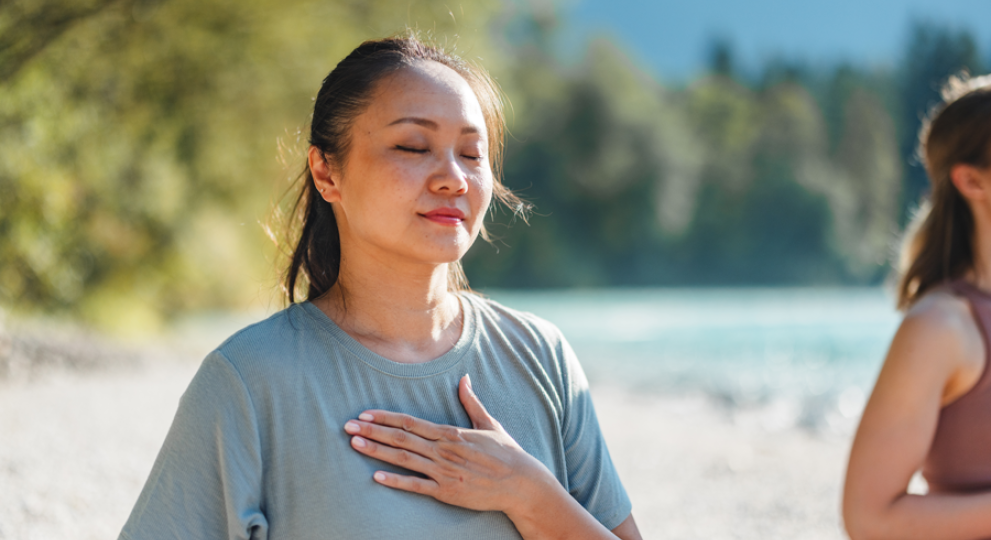Breathing Exercises to Help You Cope With Stress
Breathing Exercises to Help You Cope With Stress

One powerful tool for managing stress is one you already have: your breath.
Doing a breathing exercise is a simple way to calm yourself when you face a moment of stress or anxiety. You can also “go upstream” by creating a breathing practice that helps you get ahead of a situation you know might cause you stress. This could be when you’re waiting for test results, for example, or driving to a doctor’s appointment.
How can paying attention to your breathing help with stress? Simply put, it can help to relax your body and mind. Deep breathing activates the body's rest and relaxation response. And, for some people living with cancer, having five minutes of mindful breathing, three times a day, helps them to feel less stressed.
Here are some Microsteps — small, easy actions that can be done anywhere and at any time — that may help you focus on your breathing and be able to cope with stress better. As always, consult with your care team for the management practices that are best for you.
Box breathing (4x4 breathing or square breathing)
Box breathing is a simple technique that encourages the body to go into a state of rest and relaxation. To box breathe, breathe in for a count of four, hold the breath in for a count of four, then breathe out over a count of four. Repeat this to work towards feeling calmer.

Belly breathing
This exercise can help you to breathe more deeply and slowly. To do this, lie down on your back somewhere you’re comfortable with your knees bent. Rest one hand on your belly, just below your rib cage and one hand higher up on your chest. Breathe in through your nose, watching the hand on your belly rise while the hand on your chest stays still. Then, breathe out slowly through your mouth, watching as the hand on your belly goes back down.

The 4-8-8 method
This technique involves holding your breath for eight seconds. If that’s too long, that’s ok — you may hold your breath for as long as feels comfortable. From a comfortable position lying on your back or sitting down, breathe in for four seconds. Next, try and hold your breath to the count of eight. Slowly breathe out for eight seconds. If it helps, you may want to imagine you’re blowing out candles as you breathe out.

Alternate nostril breathing
This stress-reducing technique involves holding one hand up to your nose, with your index finger near your left nostril and your thumb near your right nostril. With your thumb, gently press and close your right nostril and inhale through the left. Hold your breath for a moment, then close the left nostril and exhale through the right. Repeat this process, alternating nostrils, and you may notice that it brings you a sense of calm.

Guided imagery
This exercise may be helpful for people experiencing pain while living with cancer. It involves closing your eyes, breathing deeply, and imagining that healing energy is building inside you. As you exhale, imagine breathing this healing energy in the direction of your pain. Imagine it easing your pain and bringing you a sense of comfort. When you’re ready to finish, imagine the healing energy floating away, taking your pain with it.
Tensing your muscles
This exercise can be done lying down in bed or in any comfortable position. It involves breathing slowly and deeply, and paying attention to the breath. As you breathe, focus on different parts of your body, starting at the top of your head. Pay attention to each body part and tense your muscles in that area, and then relax them, releasing the tension. From your head, you can move to your face, neck, shoulders, and all the way down your body to your toes.
Habit-stacking mindful breathing onto something you already do
Habit-stacking is an evidence-based method to make a new healthy habit by “stacking” it onto an existing one. Consider adding a few minutes of conscious breathing to an activity you already do, such as:
- Taking a bath or shower
- Taking a walk
- Stretching or doing yoga
- Washing your hands
- Commuting to work
- Waiting in line
Developed with Thrive Global













